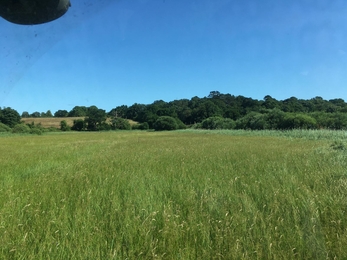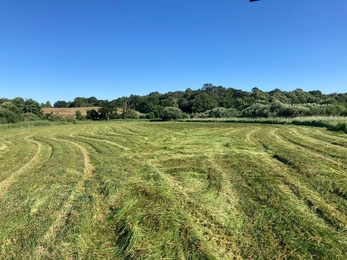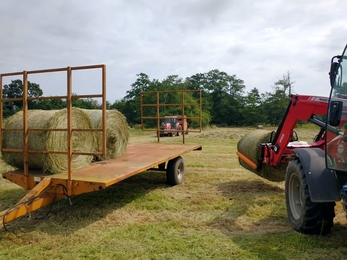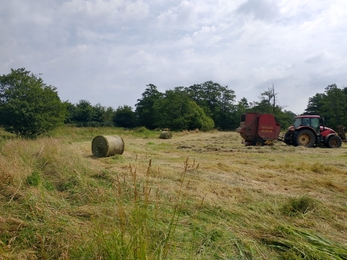Weekly wild news from our reserves - 23 July 2021
Flowering Martin's meadow, Ben Calvesbert
The mint leaf beetle as the name suggests can normally be found in the summer months munching away at the leaves of various mint plants. Its whole body is a jewel-like iridescent green colour which is peppered with tiny little indentations. Both the larvae and the adult beetles feed on mint and they are found mainly in the south and up to the Midlands of England, Wales, with a few sightings in Scotland. This photo was taken at Lackford Lakes. There is another similar looking species which also feeds on mint but is an iridescent blue colour. As you might expect it is called the blue mint beetle (Chrysolina coerulans).
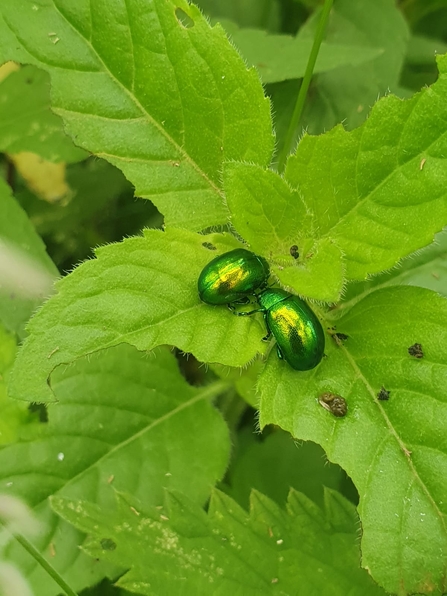
Mint leaf beetles, Joe Bell-Tye
Flicking the tongue of an adder
Adder's-tongue fern is an unusual fern that grows in grasslands and meadows, on hillsides, along woodland rides and on sand dunes. It usually appears between June and August, spending the rest of the year underground as a rhizome. It is considered a good indicator species of ancient meadows and can be found alongside common spotted-orchids, quaking grass, and devil's-bit scabious. The adder's-tongue fern has a bright green, oval and upright frond, with a single, tall spike that bears the spores protruding from it. To help spores disperse they can be released on their journey with a gentle tap, as demonstrated by the Lackford team in this video clip.
Adder's tongue fern spores (https://youtu.be/6WZXuc74rFY )
Adder's tongue fern spores
One sett to love
Assistant Warden Alex Lack has been keeping an eye on an active badger sett at Bradfield Woods National Nature Reserve with fresh excavations and several paw prints leaving the sett.
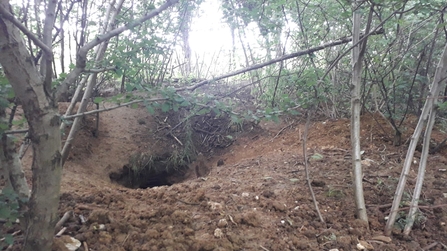
Badger sett at Bradfield Woods, Alex Lack
Ben went to mow a meadow...
It’s mowing time across our reserves with flowering meadows, so please don’t be disappointed if you see them cut. We bail up the cuttings to feed livestock and to keep the nutrient level low to establish flowering next year. These photos are from Mickfield and Martin’s meadows by Ben Calvesbert.
Lound Lakes Warden Andrew Hickinbotham has been taking photos of North East Sites Manager Matt Gooch cutting Butcher’s Marsh...
And here's the view from the cab! Matt Gooch has been making hay while the sun shines at Oulton Marshes – one of the north east’s most botanically species-rich marshes with marsh pea, marsh cinquefoil, southern marsh orchids and quaking grass. Oulton Marshes has always been managed traditionally by grazing and hay cutting, which is why it contains so many diverse species.
And finally, Jamie Smith has been making sileage at Church Farm which will help feed our conservation grazing English White cattle when they over-winter at the Farm. The cattle spend the summer months at Hen Reedbeds.










